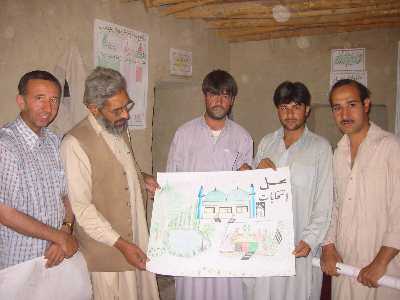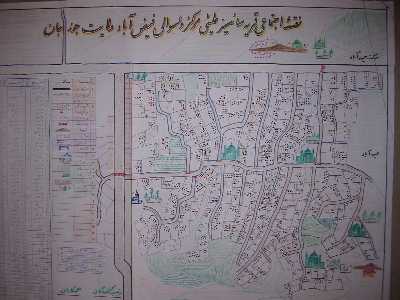Governance Structures in a Post Conflict Environment - Main Users / Purpose
 |
Donor Organisations, National, Provincial and Local Governments |
 |
There are always high stakes involved, defining the reality of centre-local relations is an arena of intense competition, both as part of elaborating the constitutional process and as the defining element of politics in a transitional period. Divisions of administrative responsibility at the central, regional and local levels affect major issues of power (e.g. taxation) and principle (e.g. religious versus secular courts and the role of women). Often modernist traditionalist divide runs parallel to central-local divisions. Often a massive international interest of states beyond the region in rebuilding the country politically and economically provides the most significant change from the conflict situation. Photo 1: Village planning workshop
Photo 2: Sections of a Village development plan
|

